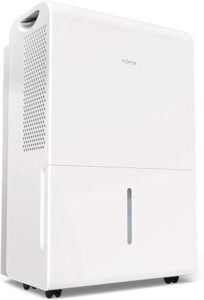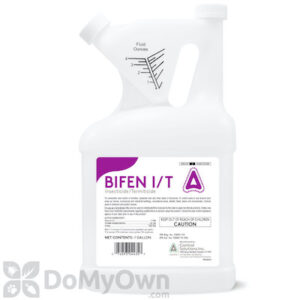Top Reasons Earwigs Are in Your House
Finding creepy crawlies in your home can give anyone the willies, but finding a bunch of them could be indicative of a bigger problem. Earwigs are a type of insect that, though harmless, like to find their way inside your home and take up residence in basements and garages. Lovers of moist, sheltered areas with adequate food sources, earwigs often find their way inside through cracks and gaps in the structure of your home. Use this guide to find out why earwigs like living in your house so much and what you can do to prevent it.
Why are earwigs in my house? Earwigs often find shelter in your home because it has access to a food source and it protects them from the elements. Unlike termites and ants that can do damage to your home’s structure, earwigs are relatively harmless and you probably won’t know they’re even there.
Now you’re probably thinking if they’re harmless do I need to get rid of them? My answer would be absolutely yes because I don’t like bugs of any kind, and the truth is, a more accurate answer would also be yes. A few earwigs are normal, but if you have several – an infestation, it could mean their food source is too large and there could be a bigger problem.
Understanding why they take cover in your house is the first step, the next is figuring out the best way to get rid of them and prevent them from coming back.

What Are Earwigs?
Earwigs are commonly referred to as “pincher bugs” because of the pincher-looking forceps at the end of their body. They are medium-sized insects, from about 1/4 of an inch to 1 1/4 inches in length. Earwigs are usually black or brown in color.
One of the reasons you may not realize you have earwigs is because they are nocturnal feeders – meaning they hide away during the day.
Earwigs feed on other insects, vegetation like moss and fungi, as well as some decaying material: mulch, leaves, etc.
They may not be damaging to the structure of your home. However, they are still attracted to materials that offer cellulose and are in the process of decay.
Old boxes, books, papers, files, etc. lying around your house are very attractive to earwigs. If some of those items are important, you’ll want to get rid of the earwigs quickly. Damage to important items will, unfortunately, not be covered by your home insurance policy.
When Do Earwigs Become Active?
You are most likely to notice earwigs in the summer as they will just have entered adulthood. They remain active throughout the fall as they mate. During the winter, they nest until hatching again in the spring.
In the summer, it is very common to notice earwigs. This is especially true if you spend time on your porch in the evenings. Earwigs are attracted to lights. At night, they will find their way toward you. In the morning, you may find them burrowed under cushions as they sleep.
Having a screened-in porch can be helpful in these situations as long as the screens are fitted to keep out the small-sized earwigs.
How Do Earwigs Get Into My Home?
Outside the home, earwigs typically find shelter under rocks, organic debris, and other dark, damp places. If you have things like this in your backyard or surrounding your house, earwigs have easier access to the inside of your home.
Inclement weather such as drought, extreme heat, extreme cold, excessive rain, etc. will also encourage earwigs to find a new shelter. Because of their small size, they can easily slip inside the home through cracks, holes, and gaps between doors, windows, foundation and siding, and attic vents. It is also possible that they make their way inside by your own activity – carrying in boxes from a garage or plants that move from the outside to inside the home.
The truth is, if you have an older home, you’re more likely to have earwigs. This is due to poor or simply old sealing between doors and windows. Though they aren’t harmful to the structure of your home, losing control over their population can create some issues.
How Do I Get Rid of Earwigs?
Once you notice you have an infestation of earwigs, it’s important to call a professional to come out and treat your home. This ensures proper treatment will kill and reduce the population significantly. After treatment, there are some things you can implement to prevent infestations in the future:
- Use dehumidifiers
- Secure Entries into the Home
- Seal Leftover Food and Clean Up After Eating
- Vacuum Regularly
- Clean Up Around the Home
- Use Insecticide
Use Dehumidifiers:
Basements are areas of the home that often have a lot of moisture in the air – a welcome place for earwigs to take up residence. Running a dehumidifier in the space will help reduce the humidity and draw out the excess moisture. This will make it less hospitable for earwigs.
Secure Entries into the Home
Whether you have a new or old home, securing the entryways is always important. Use caulk to seal window sills and any cracks in your home. Put cloth or a barrier under the doors to keep pests, as well as cold or hot air, from getting into your home.
Seal Leftover Food and Clean Up After Eating
Earwigs enjoy oily, greasy, and sweet foods, so cleaning up after eating is important. Crumbs left behind, pet food stored in the garage, and other snacks will attract earwigs so it’s important to make sure everything is cleaned up and stored securely.
Vacuum Regularly
Small infestations can be controlled by simply vacuuming thoroughly and regularly. A regular cleaning schedule will help ensure that any population of earwigs will not increase or get out of control.
Clean Up Around the Home
Clean out your gutters and check the drainage around your house, clear dead landscaping away from the home, adjust outdoor lights to shine into the house, or change to yellow bulbs – each of these steps reduces the attractiveness of your home to earwigs and other insects.
Use Insecticide that Target Earwigs
Specific insecticides can eliminate earwigs in your house. The use of Bifen IT is an effective and safe way to keep your home free from earwigs. It will ensure quick knockdown and also makes sure any future earwig invaders will be eliminated. One thing I noticed about this particular formula, is unlike many others with similar properties it doesn’t have a bad smell. So it will get rid of the earwigs without stinking up your house.
![]()
If you use these methods, you should see a controlled, reduced, or even destroyed population of earwigs in your home. Anything other than that will mean it’s time to call a professional to help determine the problem and make a plan.
Related Questions
Do Earwigs Bite?
The answer is yes, earwigs can bite; however, they rarely do. The earwig is more likely to use its pincers to catch other insects to eat. If they do get a hold of you, they may pinch your skin and hold on. The pinch, however, rarely hurts or breaks your skin.
Homeowners will often be scared or nervous when they see an earwig because the pincher appears dangerous. The truth is, earwigs move quickly and only really come out of hiding if you happen to disturb their shelter. If you notice an insect and you’re not sure what it is, calling a professional is never a bad idea. They can come and tell you what it is if there could be a problem, and how to get rid of it.
Should I Be Concerned About Earwigs In My Home?
Though the earwig itself is harmless to you, it is often indicative of another, more destructive problem that has gone unnoticed. Because of both the living conditions they like to live in and the food they like to eat, earwigs often point to water damage or other insect infestations that need to be fixed.
As we’ve established, earwigs enjoy dark, warm, and moist areas. Moist areas could mean you have a leak or water damage somewhere in the home. This can lead to wood rot, mold growth, musty smells, and foundation problems. If you notice a settling of earwigs, be sure to look around for potential water problems.
We know that earwigs don’t damage the structure of your home, but they do eat decaying matter and other insects. Those other insects could be an infestation on their own that is facilitating the growing earwig population.
The truth is, once you notice an insect infestation or just a large population in your home, no matter what it is, you should get it looked at. There is likely an underlying problem or reason for the inhabitant to be taking up residence in your home. Taking care of the problem quickly will save you lots of money and time down the road.
How Much Does It Cost To Do Seasonal Insecticide Treatments?
Normal, seasonal insecticide treatments by a professional exterminator won’t cost you more than about $300. They are more likely to be around $165. Regular treatments help eliminate bigger problems in the future. They allow an expert to take a look around to make sure everything looks normal.
The good thing about insecticide treatments is that they don’t take long at all. If you only have them spray the yard you don’t even have to be home. A normal insecticide treatment will see the exterminator spray along the garage, interior walls of the home, near window and door seals, as well as the attic. It all takes about 30 minutes and effectively prevents you from experiencing infestations.


